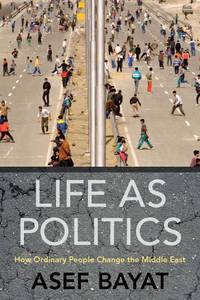Some parallels to the Southern Freedom Movement in the partial blog quotation below:
From
Insidethemiddle
. . . . Those early [nonviolent Syrian] demonstrators broke the fear barrier. And once the momentum caught on, there was no stopping the “people power” that filled the streets, that mobilized citizens of different backgrounds and persuasions, and that powered the creative energies that kept people organized, cooperative, and ready to meet whatever challenge the regime fired at them.
Was this creativity, determination, and bravery spontaneous? What unleashed such popular resistance in such a disciplined and non-violent fashion so quickly and for so long? Part of the answer is that, despite their best (and most violent) efforts, the Asad regime never completely snuffed out the will to resist. The notorious political prisons of Mezze and Tadmur were always chock full of resisters. . . .
 . . . . The most compelling analysis of the background to the Arab Spring as a whole with obvious implications for– if not direct evidence from– the Syrian Spring comes from a 2010 publication by the sociologist Asef Bayat titled Life as Politics: How Ordinary People Change the Middle East. Bayat’s theoretical approach and the evidence it is based go a long way toward explaining what otherwise might have seemed as spontaneous a year ago. That he was working out this explanation of popular resistance over the previous decade is a testament to his ability to anticipate what caught most observers (and participants) by surprise.
. . . . The most compelling analysis of the background to the Arab Spring as a whole with obvious implications for– if not direct evidence from– the Syrian Spring comes from a 2010 publication by the sociologist Asef Bayat titled Life as Politics: How Ordinary People Change the Middle East. Bayat’s theoretical approach and the evidence it is based go a long way toward explaining what otherwise might have seemed as spontaneous a year ago. That he was working out this explanation of popular resistance over the previous decade is a testament to his ability to anticipate what caught most observers (and participants) by surprise.
Based largely on examples drawn from Egypt and Iran, Bayat characterizes this phase of political activity at the grass roots as one of “social non-movements”. Unlike the more explicitly political movements that most observers look for in their research, “non-movements” are not guided by ideologies or leaders or institutions. They represent collective action by actors who are not consciously acting in unison [yet] but whose combined efforts and practices shape social change. He focuses on three specific groups that typify this kind of politics: the poor, women, and youth. One specific example that resonates with the Arab Spring, is the tendency among street sellers in urban areas to encroach on public space and to occupy it for their own purposes. Bayat calls this the “quiet encroachment of the ordinary”. Given this analysis, it should not have been surprising that it was the action of Muhammad Bouazizi, the Tunisian street vendor who was pushed from his perch by the police, that set the whole region on fire.
The lens of current events may obscure the fact that there was a Syrian Spring during which a people reclaimed their humanity from the clutches of regime intent on crushing the popular tide at any cost.
. . . . The most compelling analysis of the background to the Arab Spring as a whole with obvious implications for– if not direct evidence from– the Syrian Spring comes from a 2010 publication by the sociologist Asef Bayat titled Life as Politics: How Ordinary People Change the Middle East. Bayat’s theoretical approach and the evidence it is based go a long way toward explaining what otherwise might have seemed as spontaneous a year ago. That he was working out this explanation of popular resistance over the previous decade is a testament to his ability to anticipate what caught most observers (and participants) by surprise.
No comments:
Post a Comment